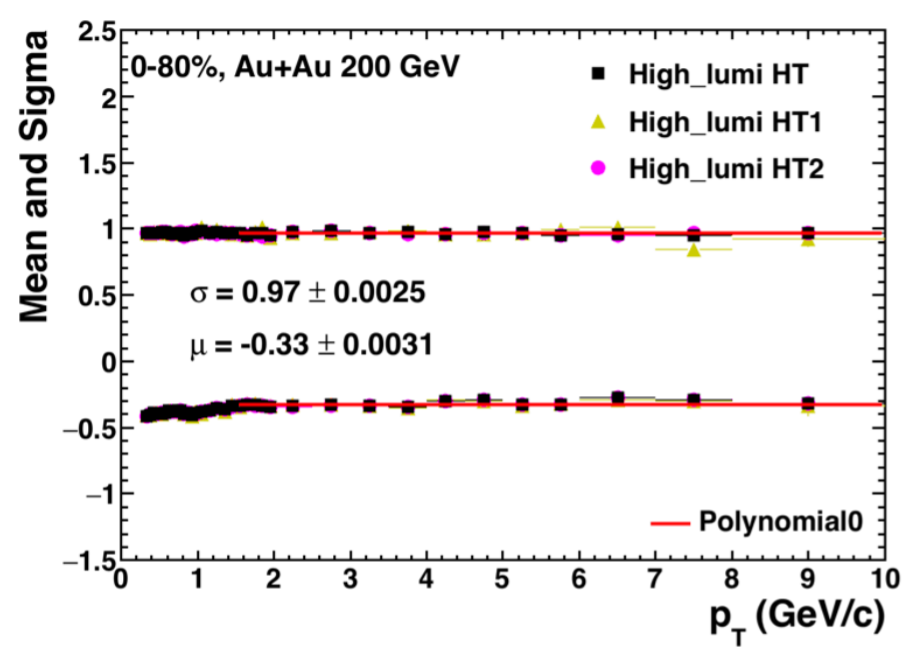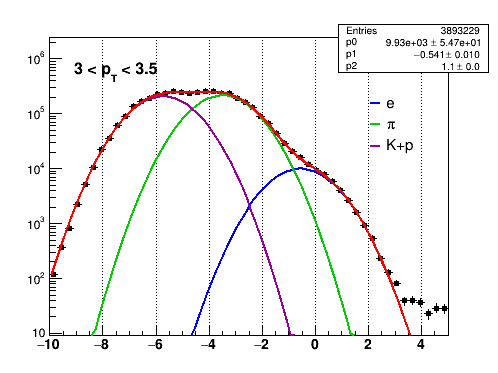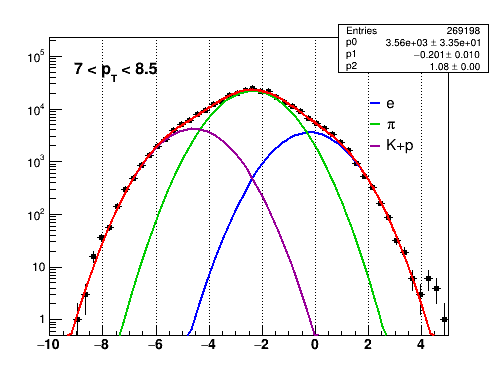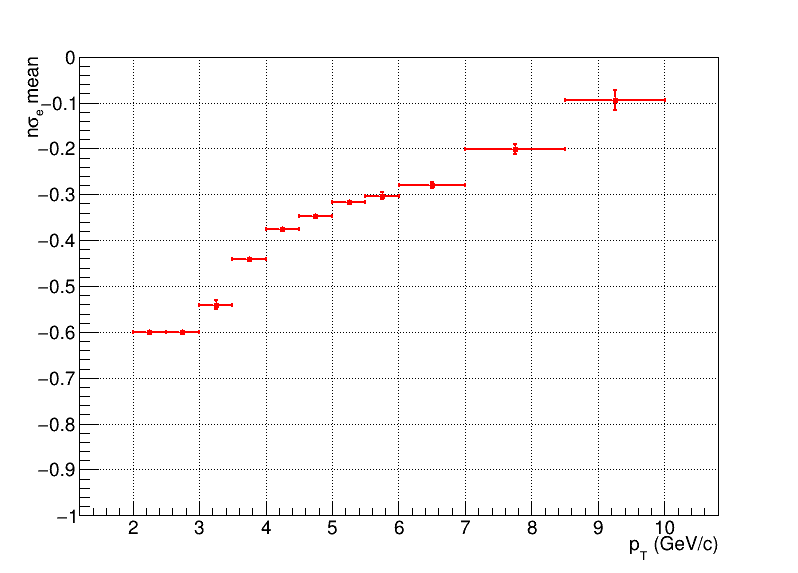Y->ee in AuAu14, nSigE cut efficiency
Summary of nSigmaElectron cut efficiency determination for Upsilon->ee analysis in BHT2 AuAu 2014.
The predicted mean value for energy loss dEdx of electron in TPC is given by its Bichsel function. The dEdx should follow a normal distribution centered in this function. The nSigmaElectron is constructed so that at any P it gives the distance between the dEdx and the mean in number of sigmas of said normal distribution.
Ideally, the nSigmaElectron distribution for electrons should be a Gaussian with mu=0, sigma=1. However, this is not true (usually mu~-0.5, sig~1).
The nSigmaElectron cut efficiency is the fraction of electrons which pass the cut, in ideal case then int_l^r exp(-x^2) dx.
Previous analyses
( here ) In UU@193 GeV analysis, the -1.2 < nSigE < 3 cut was used. Robert investigated three methods to determine the efficiency:
a) single identified electrons (BEMC cuts) in NPE18
b) single identified electrons in MB
c) photonic electrons in NPE18 with m_ee<50 or <150 MeV
Last method was used in the analysis.
Here are his results from the last method:

The mean is +-constant, the sigma is decreasing with pt and the efficiency is rising from ~0.8 to ~0.9 .
( here ) Shenghui has analysed nSigE efficiency in her high-pT NPE analysis in BHT AuAu14. She gets it from photonic electrons m_ee < 100 MeV. However, she uses |y|<0.7 cut as opposed to my |y|<1 .
She uses -1.5 < nSigE < 3.0 cut.
Here are some plots from her results:



The efficiency seems very constant, even though it is unzoomed. It's ~0.9 value is systematically higher than Robert's values, but she uses wider nSigE cut.
The rising trend is not (noticable) here.
This analysis
So far I've tried to determine the efficiency with single identified electrons. I included all TPC and EMC cuts but the nSigE. I use -1.5 < nSigE < 3 in the analysis.
For the time being, to avoid the mean/width correlation, all widths were constrained to vary from their mean by 3 errors of the mean.
Here are some of the plots:






The trends in means and widths are different from Robert's analysis. The trend in the efficiency is little bit stronger but the values are +- similar. Technically, we should have higher efficiency because our cuts are looser.
I'll try to investigate this with a photonic electron m_ee < 100 MeV sample and see what it looks like.
- matonoli's blog
- Login or register to post comments
